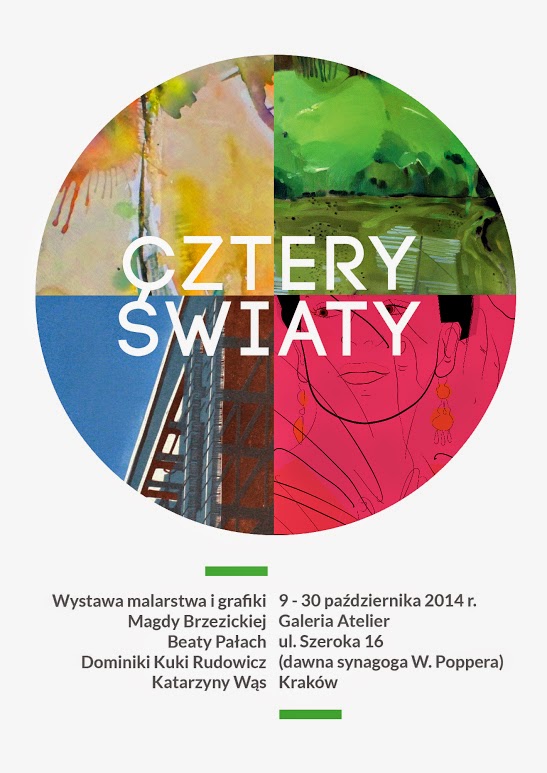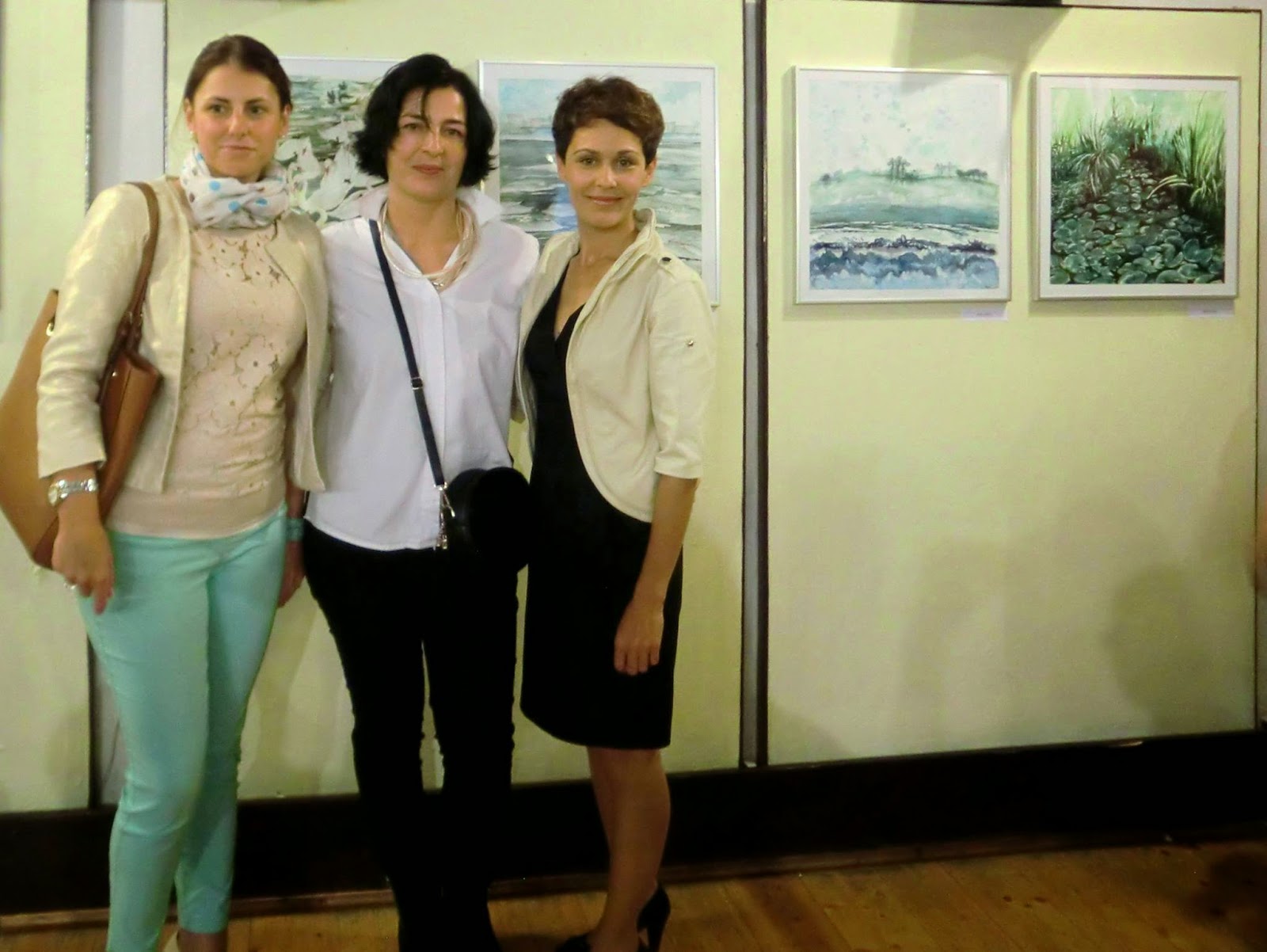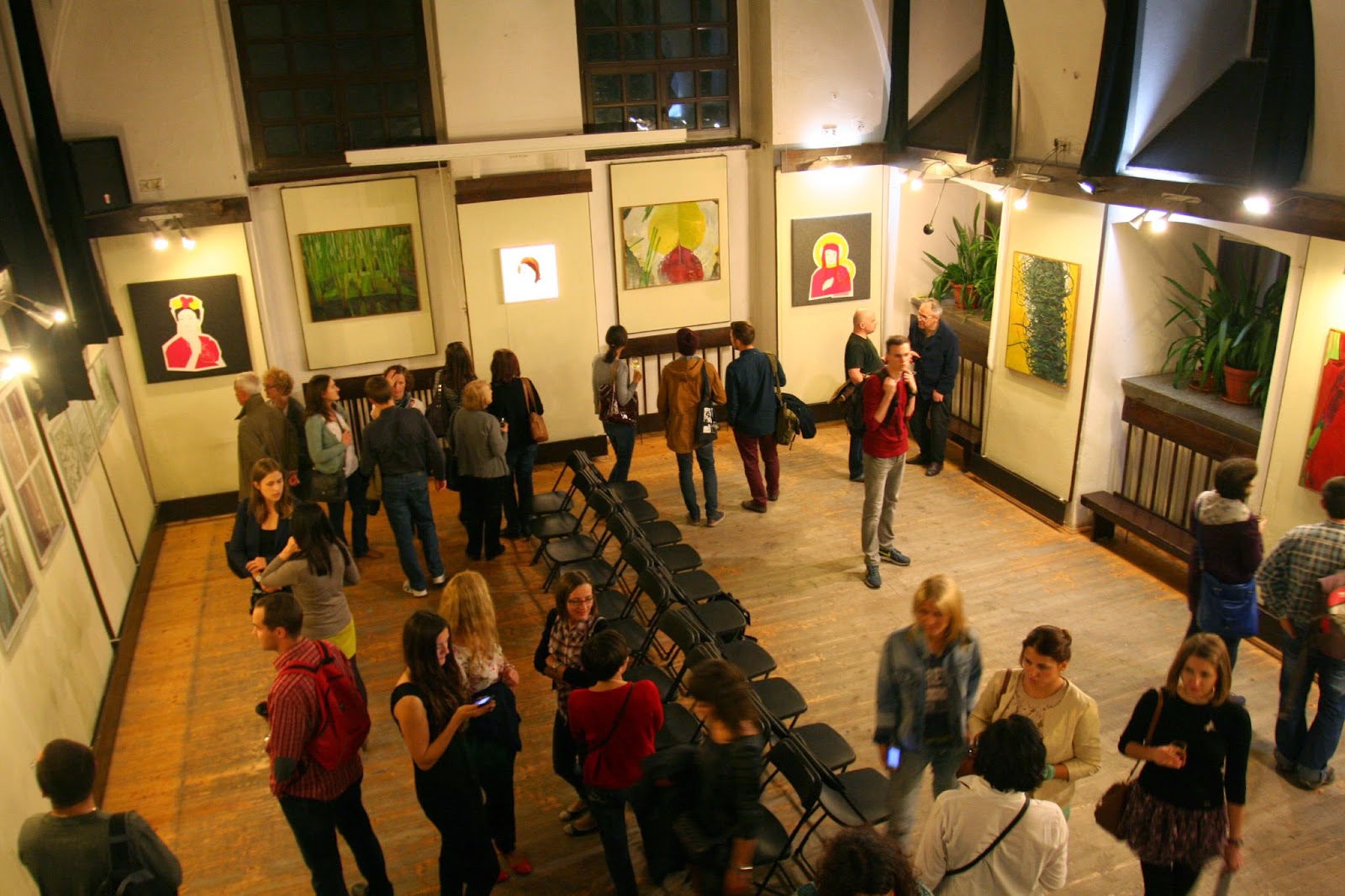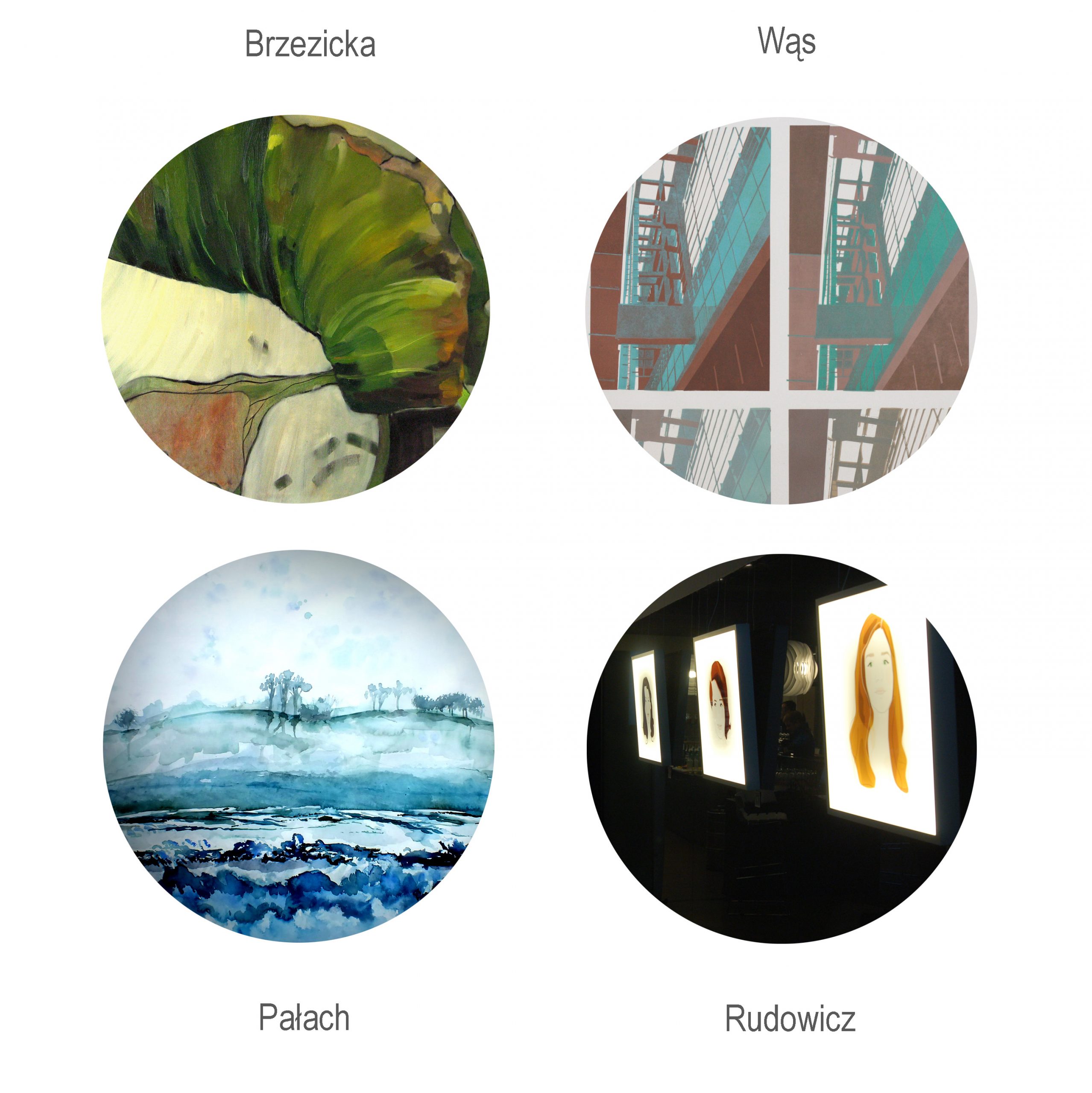Four Worlds
Group exhibition
Atelier Gallery
Kraków
X 2014
The exhibition “Four Worlds” presents the work of four artists who confront their achievements after several years since their first meeting at the Art Institute in Pedagogical University of Cracow. The same place, time and environment had an influence on their future artistic careers. However, despite the similar start, each of the graduates had chosen a completely different style and technique. So now you can watch the result of the diverse art works: oil painting of Magda Brzezicka, watercolours of Beata Pałach, digital art of Dominika Rudowicz and linocut prints of Katarzyna Wąs.

Review
Four young artists present their works in the Atelier Gallery: Magda Brzezicka, Beata Pałach – Milligan, Dominika Kuka Rudowicz and Katarzyna Wąs. The title of the exhibition “4 worlds” is to emphasize the variety of attitudes and choices of creative paths. This is indeed the case, but let’s start with the similarities. All the artists are young, very talented, beautiful, full of optimism, enthusiasm and ideas for their further activities. Magda, Beata, Dominika and Katarzyna were also joined by a joint start, when in 2003 they began studies at the then Art Institute of the Pedagogical Academy in Krakow. Even though their creative paths diverged, the old friendship or the usual thread of sympathy has not been broken. They can now confront the effects of their achievements after over ten years of research and experience at a joint exhibition in Krakow at the Atelier Gallery. And we, the viewers, have the opportunity to evaluate.
Magda Brzezicka presents oil paintings inspired by the Krakow botanical garden. For centuries, in various cultures, the garden has been a symbol of giving harmony to chaos, a substitute for heaven on earth, a microcosm created according to one’s own possibilities and needs. Although we associate gardens, orangeries and greenhouses with the beauty and delicacy of nature, the artist does not care much about showing the phenomenal beauty of the world and the exoticism of plants. She probably does not care about manifesting her own sensitivity. Magda focuses more on discovering hidden rhythms and forms that are found in the shapes of nature. In my opinion, the artist wants to decode some invisible, internal order that lurks beneath the surface of things and phenomena. In this search, one can also feel a distance to one’s own experiences, control over sentiments and affection. Magda Brzezicka is not the type of artist torn by a storm of emotions. As she says herself, she is more interested in capturing what is permanent in the world, painting is her element, a source of joy and a springboard from reality.
Beata Pałach – Milligan eagerly uses various media, such as pastels, oil paints or collage, but her favorite technique is watercolor. There is no special tradition and esteem for this technique in our country. We consider watercolor somehow a technique for the youngest children. In its essence, it is a very difficult technique, requiring a painter to be highly skilled in the art. The paintings by Beata Pałach presented at the exhibition result from a realistic view of the world, but their main strength is discreet, poetic mood and sometimes metaphorical generalization. The watercolors in subtle pearly-gray scales indicate both her color sensitivity and emotional infatuation with places that we do not notice at all in our everyday activities. The great advantage of watercolor painting is its naturalness and spontaneity of gesture, what is called the stylistics of the picture and the painterly stroke of the brush. Her art begins with careful observation and ends with creation, because, as the author herself reminds, her intention is not to realistically represent specific people, places, objects or plant species, but to emphasize the power of nature, as well as its endless richness of colors and moods.
A completely different aesthetic and poetics is proposed by Dominika Kuka Rudowicz. He is a person involved in many projects and creative initiatives, the so-called a restless spirit whose one field of activity is not enough. Her element is the computer and the possibilities offered by modern technology, but Dominika also deals with graphic design, book illustration and typography. She has completed post-graduate studies at the Faculty of Interior Architecture, and at the exhibition she presented a series of portraits inspired by famous characters and a glowing portrait of “Avatar”. Her computer graphics come from pop art, Japanese graphics and the Polish school of book illustrations. Dominika points to Bohdan Butenka, but I also see echoes of the drawings of Maja Berezowska and Jan Marcin Szancer in her works. In any case, the portraits of Dominika Rudowicz delight with their sophisticated lines and captivate with a sense of humor. Her art is not a bloated morality play, but neither is it a spooky entertainment. It is rather a Persian eye at the viewer and at the same time an unforced praise of the joy of creation.
Finally, Katarzyna Wąs, author of mysterious linocuts. Admittedly, the artist does oil painting, but to emphasize the formal differences at the exhibition, she presented a series of colorful linocuts entitled “Courts”. “Colored” in this case is not a very precise term, because the color of these graphics is clearly muted and dimmed, so as to emphasize the message of the drawing. Katarzyna Wąs creates the metropolitan world, the world of reinforced concrete and glass jungle, a kind of anti-nature. The tangle of architectural rhythms of the facades with rows of their shadows, restless slanting perspectives, and the variability of the planes of the walls and galleries give the paintings an unsettling dimension of a tangle, where there is no room for human reflex. The viewer gets lost and finds himself between reality and the illusion creating a complex, vibrating and pulsating whole. The eye is not able to comprehend everything at the first glance, because the excessive amount of sensations causes a specific lack of sharpness. The author builds fragments of this big-city kaleidoscope using precisely the principles of a convergent perspective, tight frames and other thoroughly realistic means of expression. However, it does not achieve a realistic effect, but semi-metaphysical and slightly dehumanized, because the only element of nature that appears in these works is only a modest piece of heaven. Do the works of the young graphic artist express uneasy questions about the goal of more and more aggressive human activity, or are they a manifestation of fears about his civilization meaning?
The joint exhibition, more than 10 years after starting studies, is definitely an interesting experience and an artistic adventure. Despite the different styles, techniques and formats emphasizing their strong personalities, the exhibition is not cluttered. Each of the graduates chose a completely different direction of their activities, creating works that are highly individualized and very characteristic for themselves. Their works complement each other, creating an interesting contrast. Although the artistic paths have diverged into 4 winds and 4 directions of the world, camaraderie or even friendship, and certainly mutual kindness and tolerance towards creative attitudes, remain. It will surely bear fruit in the future. It is natural that young people at the beginning of their creative path are still waiting for many surprises, turns and life surprises. It is important that they do not stop halfway, that they do not run out of fantasies and ideas, and that they constantly find the joy of creating. Youth is the period of life when feelings are the freshest, enlightenment with the world is the strongest, where almost everything is new and unusual. Meanwhile, I invite you to the Atelier Gallery at ul. Szeroka 16 to see their achievements so far.






